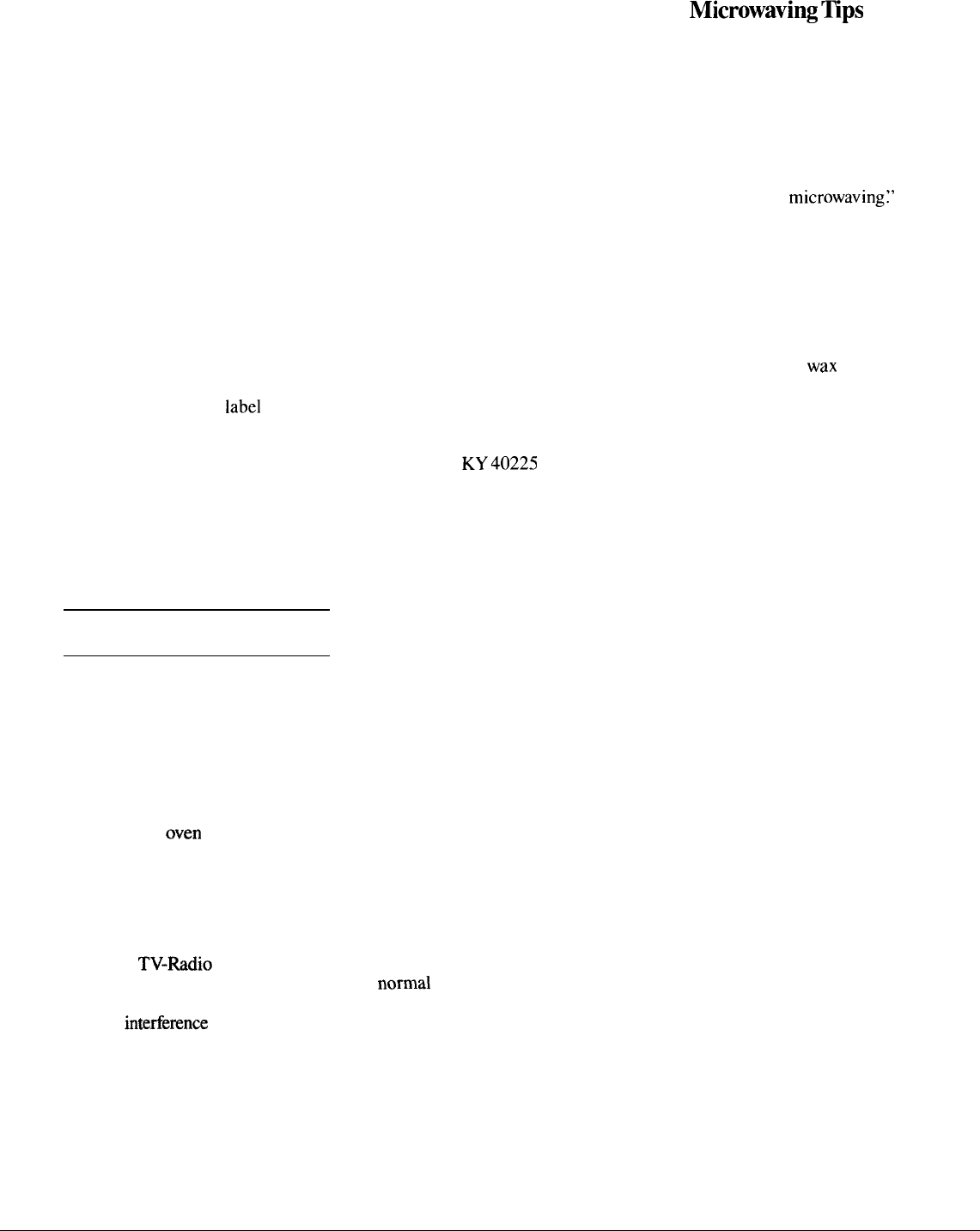
Help us help you...
Before using your oven,
read this book carefully.
It is intended to help you operate
and maintain your new oven
properly.
Keep it handy for answers to your
questions.
If you don’t understand something
or need more help, write (include
your phone number):
Consumer Affairs
General Electric Company
Appliance Park
Louisville, KY 40225
Write down the model
and serial numbers.
You’ll find them on a
label
on the
left side wall of control panel when
oven door is open.
These numbers are also on the
Consumer Product Ownership
Registration Card that came
with your oven. Before sending
in this card, please write these
numbers here:
Model Number
Serial Number
Use these numbers in any
correspondence or service calls
concerning your oven.
Be sure your oven
is registered.
It is important that we know the
location of your oven should a need
occur for adjustments.
Your supplier is responsible for
registering you as the owner.
Please check with your supplier to
be sure he has done so; also send in
your Consumer Product Ownership
Registration Card. If you move, or
if you are not the original
purchaser please write to us,
stating model and serial numbers.
This appliance must be registered.
Please be certain that it is.
Write to:
General Electric Company
Range Product Service
Appliance Park
Louisville,
KY40225
If you received a
damaged oven . . .
Immediately contact the dealer
(or builder) that sold you the oven.
Save time and money.
Before you request service . . .
check the Problem Solver on
pages 34 and 35. It lists causes of
minor operating problems that you
can correct yourself.
All these things are normal with your microwave oven:
●
Dimming
oven
light and change
● Steam or vapor escaping from
in blower sound may occur while
around the door.
operating at power levels other
than high.
● Light reflection around door or
outer case.
● Dull, thumping sound while
●
During cooking you will hear
oven is operating.
“cracking” and “popping” noises
● Some
TV-hdio
interference
which are nothing more than
might be noticed while using
normal expansion of the oven.
your microwave oven. It’s similar
●
When microwaving, at end of
to the
interferen~ caused by other
small appliances and does not
cycle you will hear a slight thump.
This is normal.
indicate a problem with your oven.
Microwaving~ps
●
Make sure all cookware used when
microwaving is microwave safe.
Most glass casseroles, cooking
dishes, measuring cups, custard
cups, pottery or china dinnerware
which does not have metallic trim
or glaze with a metallic sheen can
be. used. Some cookware is labeled
“suitable for
microwaving:’
If you are unsure, use this dish test:
Measure 1 cup water in a glass cup.
Place in oven on or beside dish.
Microwave 1-l M minutes at High. If
water becomes hot, dish is microwave
safe. If dish heats, it should not be
used for microwaving.
● Paper towels,
wax
paper, and
plastic wrap can be used to cover
dishes while using microwave
functions in order to retain
moisture and prevent spattering.
. Some microwaved foods require
stirring, rotating or rearranging.
Check your cookbook.
●
Steam builds up pressure in foods
which are tightly covered by a skin
or membrane. Pierce potatoes, egg
yolks and chicken livers to prevent
bursting.
2
